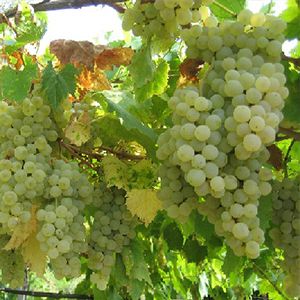 DELIVERY FROM £4.95
DELIVERY FROM £4.95 FREE DELIVERY FOR ORDERS OVER £100
FREE DELIVERY FOR ORDERS OVER £100Home » Community » Wine and Grape Guide » Durella

The Durella grape is a historic white variety native to the Veneto region, particularly in the Alpone Valley near Bolca, an area renowned for its prehistoric fossils. Remarkably, some fossilized grape remains found in Bolca are believed to be ancient ancestors of the Durella vine, highlighting the area's deep-rooted viticultural heritage.
The name Durella likely derives from the grape's resilient, thick-skinned berries, which are known for their resistance to spoilage and disease. In the early 20th century, Durella was traditionally vinified with maceration, resulting in highly acidic, intensely colored, and astringent wines. These wines were often used to enhance the acidity of blends.
By the 1960s, winemakers began to experiment with white vinification techniques, which yielded a more refined and balanced expression of the grape. Thanks to its naturally high acidity and vibrant character, Durella is now primarily used to produce sparkling wines, including both Charmat and traditional, classic method styles.
The Durella grape has a medium-sized berry, white, ovoid with thick, tough, waxy skin; yellowish to golden-green in color with a medium, short, compact, and stocky bunch and a medium, typically three-lobed or entire leaf. Durella is a hardy and late-ripening grape, with excellent disease resistance and acidity retention.
Wines made from Durella grapes are typically straw-yellow in color, with a delicate, fruity aroma and a distinctively fresh, dry palate. Its bracing acidity makes it ideal for crisp still wines and particularly well-suited for sparkling wine production under the Lessini Durello DOC designation.



Before we say ciao, why not join our newsletter & stay up to date on everything happening on planet Italyabroad.com